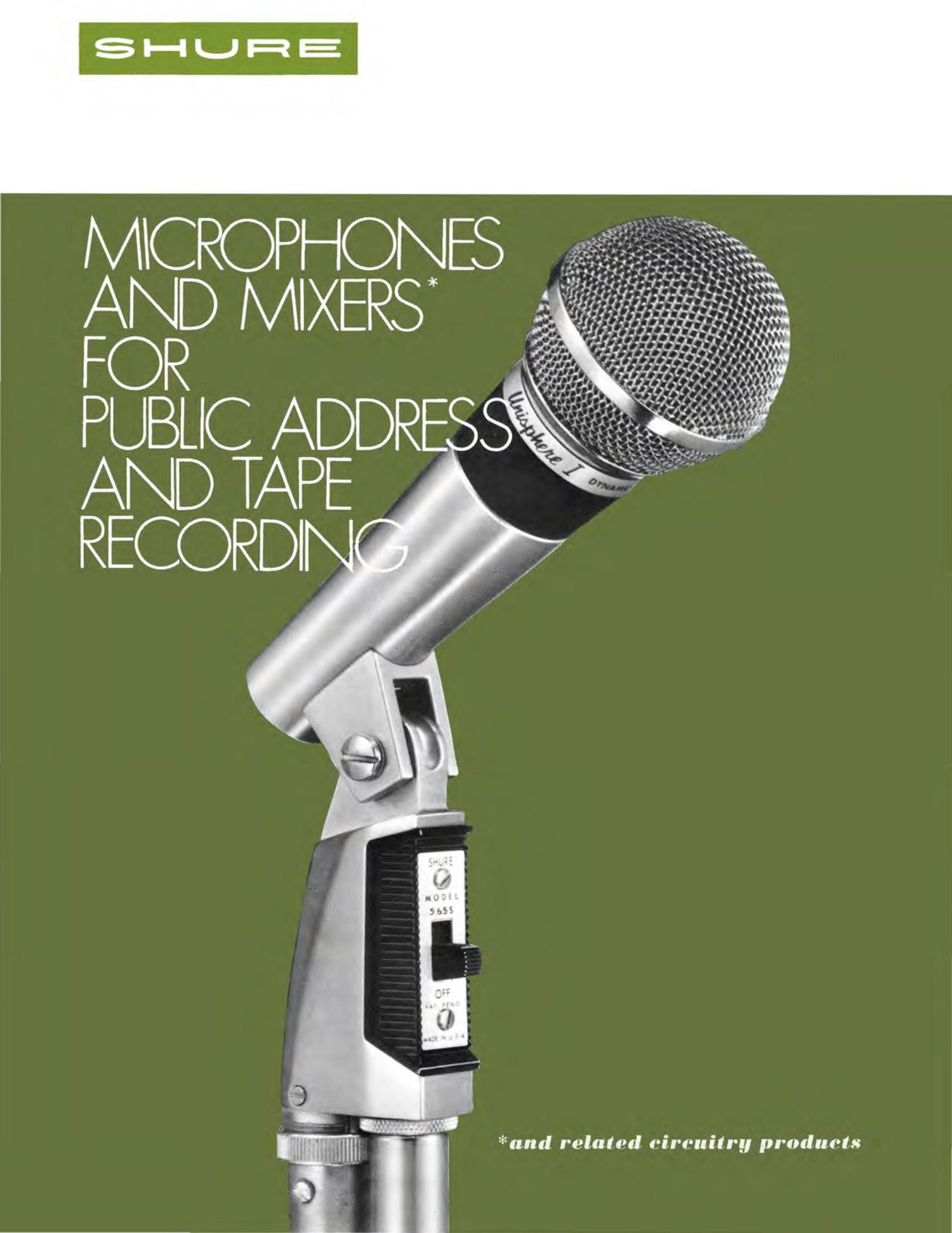Shure 1969 catalogue microphones public address
This is the 17 pages manual for shure 1969 catalogue microphones public address.
Read or download the pdf for free. If you want to contribute, please upload pdfs to audioservicemanuals.wetransfer.com.
Page: 1 / 17
